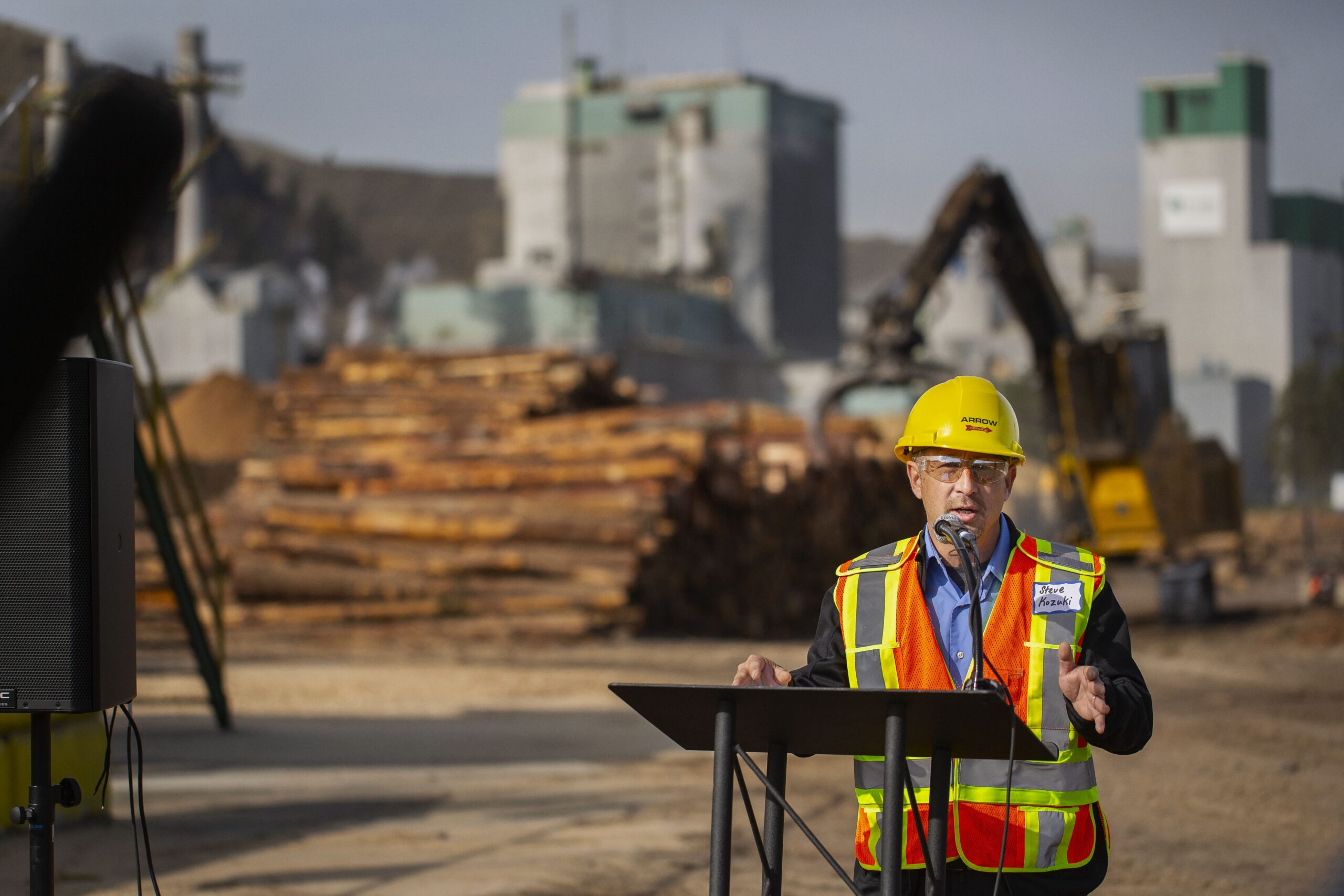Forestry Projects to Help Utilize Waste Wood or Mitigate Wildfire Risk
Kootenay & Boundary region, B.C. – At a press event in Kamloops, the executive director of the Forest Enhancement Society of BC (FESBC), Steve Kozuki, announced 42 newly funded forest enhancement projects. These projects throughout the province of B.C. will either assist with the delivery of uneconomic forest fibre to pulp and pellet mills or green energy facilities or will help communities reduce their wildfire risk. Among these projects, five are located in the Kootenay Boundary region.

“The funding provided by the Forest Enhancement Society of BC is a testament to the Government of British Columbia’s drive to foster environmental sustainability and community wildfire risk reduction. Their support of these transformative projects demonstrates their commitment to helping communities reduce their risk of catastrophic wildfire events and transforming waste wood into green energy and sustainable products. They are taking action on climate change while at the same time promoting job growth and community resiliency throughout our province,” said Kozuki.
These newly funded projects come as a result of the $50 million given to FESBC earlier this year by the Ministry of Forests to boost fibre supply by utilizing uneconomic fibre and reduce wildfire risk while also supporting workers and communities.
“Our forests have endured some very difficult years of late. Devastating wildfires, pine beetle epidemics and the effects of climate change have stressed the environment more than ever before, with direct impacts felt by rural and First Nations communities,” said Bruce Ralston, Minister of Forests. “By using burned or damaged wood, projects around B.C. are providing the forest industry with fibre and are actively increasing our resilience to future wildfires.”

Photo credits: Peter Flett, OIB.
The five projects in the Kootenay Boundary region are:
- Incremental Pulp Wood Haul project: $1,009,340 in FESBC funding to transport low value pulp logs to the Skookumchuck Pulp mill instead of piling and burning them.
- Debris Management Town of Golden: $159,400 in FESBC funding in a collaborative project with BC Hydro and the Town of Golden to remove debris from the Kinbasket reservoir to be ground and shipped to an energy facility in Golden.
- Mt. Buchanan Fire Access Trail project: $127,000 in FESBC funding for the Kaslo and District Community Forest Society to manually thin forested areas adjacent to the community of Kaslo.
- Harrop and Narrows linear fuel breaks 2023-25 project: $460,950 in FESBC funding for the Harrop Procter Community Co-operative to thin forests adjacent to roads, to pile the post-harvest debris, and to transport low value fibre to Castlegar.
- Osoyoos Indian Band/Celgar Fibre Recovery Partnership: $1,948,118 in FESBC funding for Nk’Mip Forestry LLP to identify low value logs located outside of the economic range of the pulp mill in Castlegar to ship them to the Celgar pulp mill or one of their three satellite yards.
Many of these initiatives will utilize waste wood to produce green energy and sustainable products, reducing our reliance on fossil fuels and plastics that have long dominated our everyday lives. Other newly funded projects in the Kootenay Boundary region will reduce wildfire risks for communities.
“With challenges such as insect epidemics, devastating wildfires, and the need to conserve old growth and wildlife habitat, it is crucial to find innovative solutions,” said Kozuki. “The declining timber supply has amplified the importance of utilizing leftover forest fibre that would have otherwise gone to waste.”
Of the 42 new projects funded throughout the province, 24 projects have direct First Nations involvement, while eight have some First Nations involvement.
ADDITIONAL QUOTE:
Osoyoos Indian Band/Celgar Fibre Recovery Partnership
Dan Macmaster, Osoyoos Indian Band: “Better fibre utilization from harvesting permits is very important to the Osoyoos Indian Band (OIB). Our commitment to responsible forestry practices goes beyond limiting brush piles and reducing burning; it extends to ensuring economic viability for logging contractors who are struggling to feasibly haul the low-value pulp logs out of the forest to a chipping facility. Led by the OIB Forestry Department, our project incentivizes licensees to utilize all logging fibre by funding the costs of hauling it to pulp mills or yards. With funding from the Forest Enhancement Society of BC, we can achieve our utilization objectives throughout the OIB’s traditional territory, resulting in better forest stewardship and a significant reduction in burning logging debris. This funding will provide the crucial financial support needed to process and transport pulp fibre, making a tangible impact on climate change and securing a sustainable future for our forests.”
FESBC would like to gratefully acknowledge the financial support of the Province of British Columbia through the Ministry of Forests.
